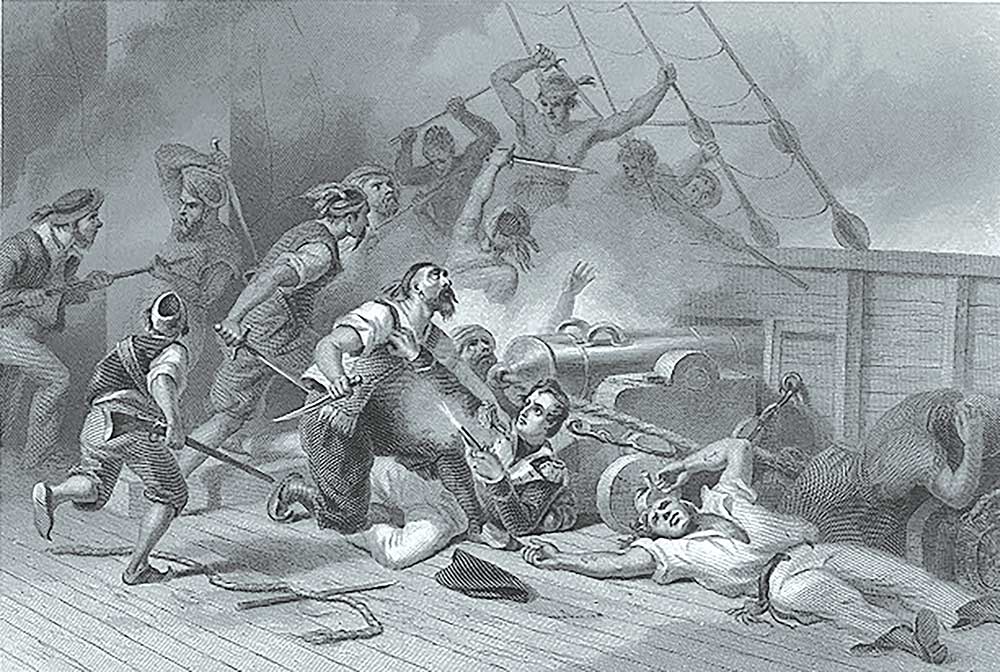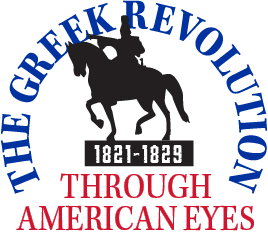Fighting Barbary Pirates
Americans Encounter the Ottomans in the Mediterranean
The Barbary pirates were Ottoman corsairs who operated off the North African coast from the era of the Crusades to the 1800s. The pirates seized merchant ships and raided coastal towns, enslaving Europeans for the Ottoman, North African, and Middle Eastern slave markets. The Barbary States, autonomous Ottoman provinces, also practiced piracy to exact tribute and collect bribes from vessels passing through the Mediterranean.
The Barbary Wars introduced the U.S. into the Mediterranean sphere of influence and onto the global stage as a naval power.
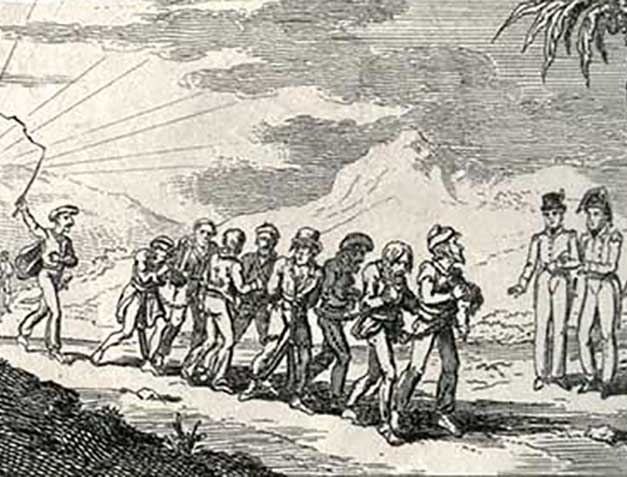
(Public domain via Wikimedia Commons)
This engraving, published in 1815 by Captain Walter Croker of Britain, documented horrors he witnessed in Algiers in 1815. Croker sought to bring attention to the plight of enslaved Europeans in the Barbary States, including those shipwrecked along the northern coast of Africa and pressed into slavery.
Prior to independence, American colonial vessels had the protection of the British Navy, but after the American Revolution, this protection was lost. In 1786, the U.S. and Morocco – an independent kingdom adjacent to the Barbary states under Ottoman patronage – signed the Moroccan-American Treaty of Friendship, which is the oldest unbroken American friendship treaty with a foreign power. The agreement allowed safe passage to U.S. merchant vessels and gave them access to Moroccan ports. Nonetheless, the threat from Barbary piracy remained and contributed to the creation of the U.S. Navy in 1794.
The Barbary pirates seized merchant ships and raided coastal towns, enslaving Europeans.
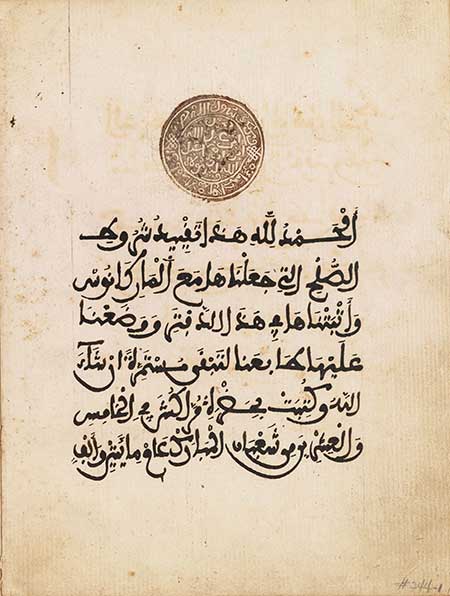
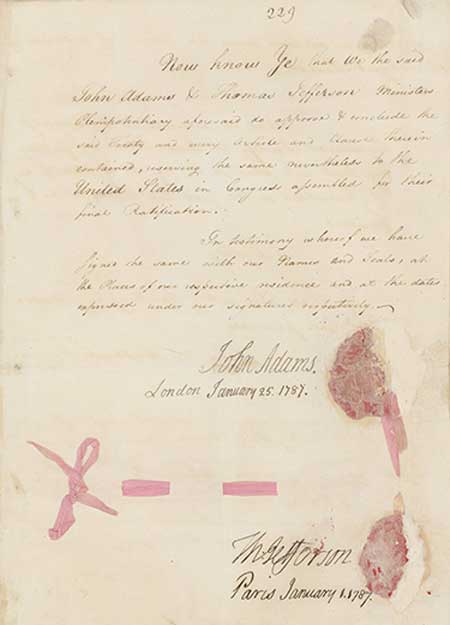
(Public domain via Wikimedia Commons)
The Moroccan–American Treaty of Friendship, 1786. Morocco was the first nation to recognize the independence of the United States, which it did in 1777.
In 1801, the Thomas Jefferson administration halted tribute payments and the Pasha of Tripoli declared war, starting the First Barbary War (1801–05). Jefferson dispatched the new navy, including the USS Philadelphia, the first frigate of the U.S. Navy. The ship ran aground in the harbor of Tripoli and the captain and crew were captured. Lieutenant Stephen Decatur (1779–1820) managed to recapture the Philadelphia and burn it to keep it from the corsairs. In 1805, the U.S. Marines captured the Tripoli fort and secured the first American military victory on foreign soil.
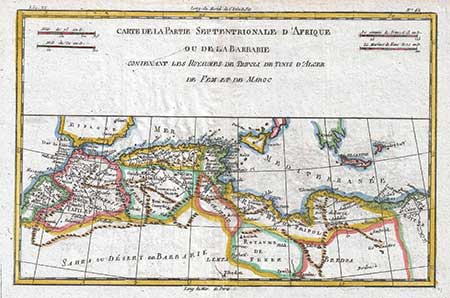
(Public domain via Wikimedia Commons)
This map of the Barbary coast, made in 1780 by Rigobert Bonne and Guillaume Raynal in response to European interest in the region due to attacks by the Barbary pirates, includes, from west to east, modern-day Morocco, Algeria, Tunisia, Libya, and in the north, parts of adjacent Spain, Italy, and Greece.
The U.S. Navy Enters the World Stage
British interference with American commerce in the succeeding years led to the War of 1812. After the war’s end in 1815, the Dey of Algiers, seeking to take advantage of American exhaustion, declared war on the U.S., but the Americans swiftly captured Barbary ships and forced Algiers to surrender, ending the Second Barbary War (1815) and attacks on American merchant ships. Although often overshadowed by the War of 1812, the Barbary Wars introduced the U.S. into the Mediterranean sphere of influence and onto the global stage as a naval power.
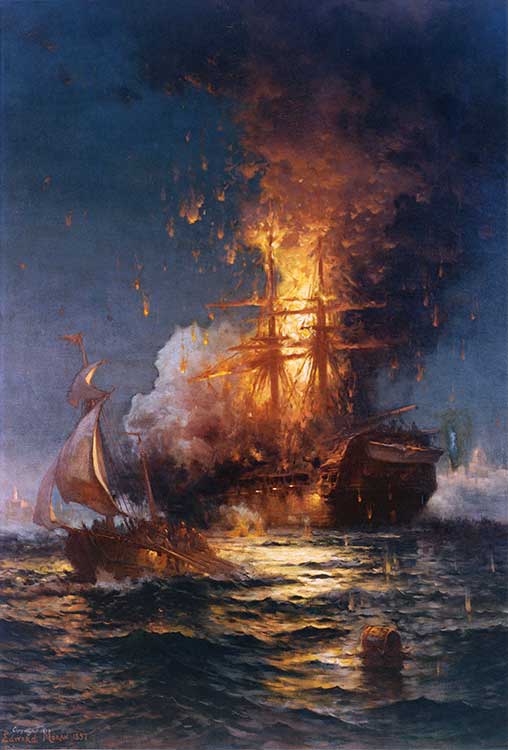
(Public domain via Wikimedia Commons)
This painting by Edward Moran (1829–1901) depicts the burning of the USS Philadelphia in the harbor of Tripoli during the First Barbary War.
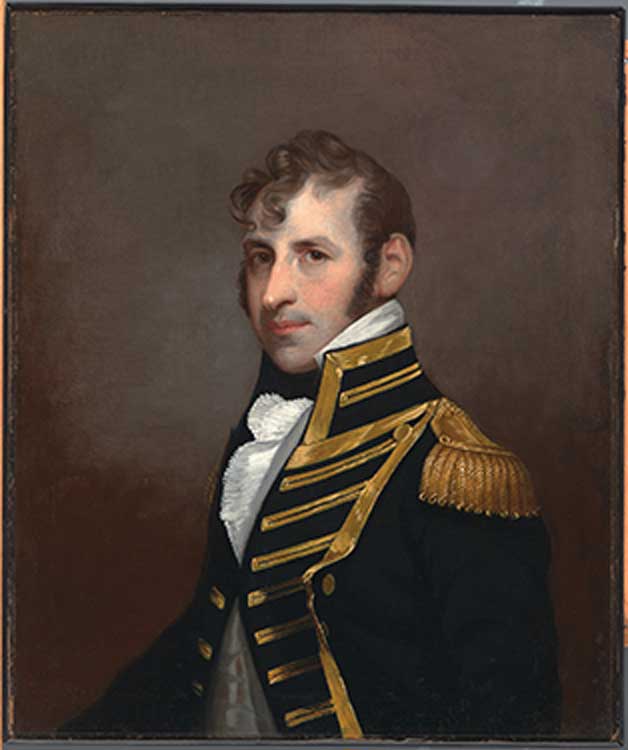
(Public domain via Wikimedia Commons)
This portrait of Stephen Decatur (1779–1820) was painted by Charles Bird King (1785–1862) between 1815 and 1825. Decatur is credited with recapturing and setting fire to the USS Philadelphia during the First Barbary War. Then a lieutenant, Decatur eventually commanded many American frigates, including the USS Constitution, and reached the rank of commodore. Commodore Decatur also served in both the War of 1812 and the Second Barbary War.
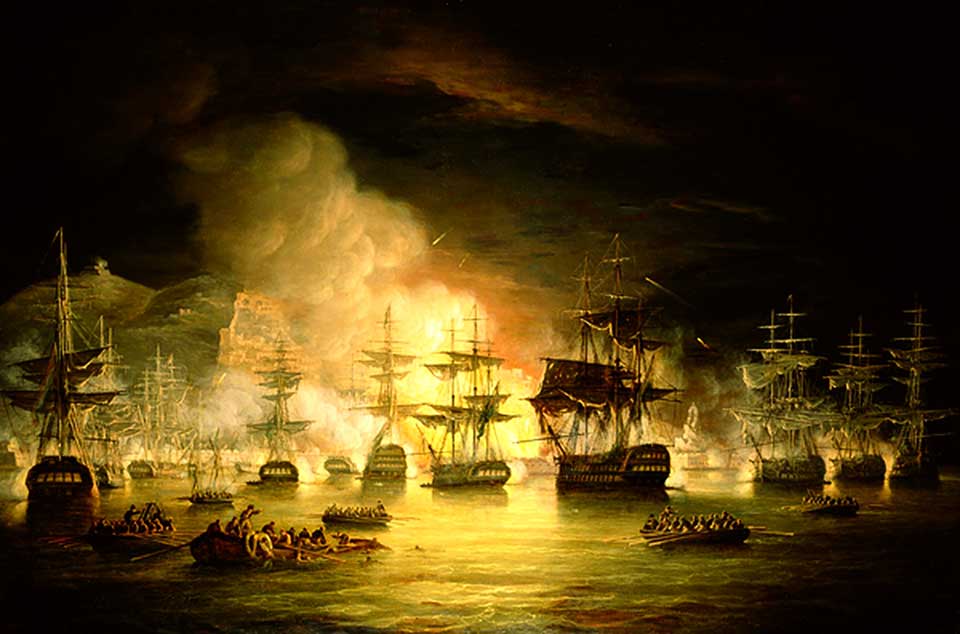
(Public domain via Wikimedia Commons)
The American fight against Barbary piracy was part of a larger campaign, which included European powers. The Bombardment of Algiers (1820) by Thomas Luny (1759–1837) depicts the August 1816 Anglo-Dutch attack on Algiers, aimed at freeing Christian slaves following failed negotiations with the Dey.
(Public domain via the New York Public Library)
The lithograph below shows Decatur in hand-to-hand combat aboard an enemy ship during the Second Barbary War.
